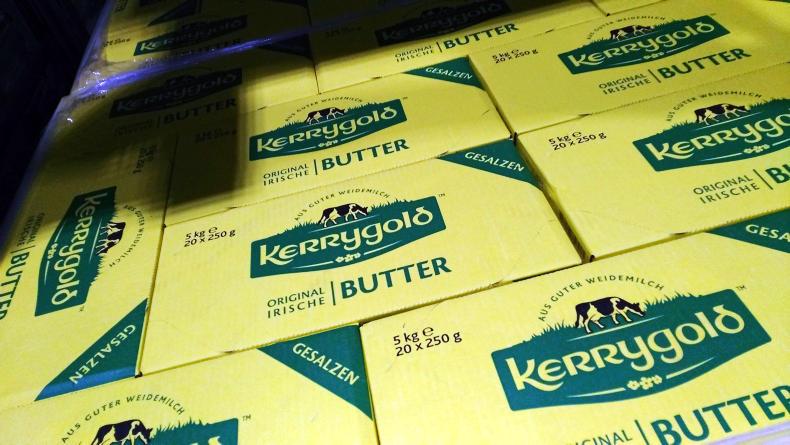Since early March, spot prices for butter in Europe have increased by 50%, or more than €2,000/t, to reach their highest ever price above €6,000/t in the last week. But what is driving this escalation in price and how long can they stay at this level? Is €5,000/t to €6,000/t the new normal for butter in Europe?

Market dynamics
The foundation for the current price of butter was laid in the second half of 2016. With farmgate milk prices on the floor and a milk supply reduction scheme being rolled out by the European Commission, milk production across the EU-28 began to contract.
There were big declines in supply from some of Europe’s largest milk producers, including France and the UK. This reduction was one of the main reasons why total butter production across the EU declined more than 5% last year to just over 2.15m tonnes.
At the same time as milk supplies were tightening across Europe, butter exports from the EU to international markets continued to perform strongly, with particularly strong demand from the US, Saudi Arabia, Egypt, Morocco and China.
The total volume of butter exported from the EU-28 last year increased to a record 162,250t, a 20% increase year-on-year. Irish butter played a major role in this, with shipments to international markets increasing 50% year-on-year to reach 32,500t. This made Ireland the EU’s largest butter exporter for the first time, ahead of France and the Netherlands. French butter exports in 2016 grew 11% to 31,500t, while Dutch exports were down 5% to 20,800t.
And while international export accounts for just 8% of the butter produced in Europe, the strong performance of exports did have a major impact on stocks. This time last year, there were over 100,000t of butter sitting in cold storage in Europe, but by December these stocks had dwindled to less than 25,000t.
Subdued outlook
However, in early 2017 there was little concern in the market that a butter shortage was on the horizon – even with the depleted stock levels. The price outlook for butter was actually quite subdued in January as prices declined week-on-week.
After all, New Zealand milk production had recovered sharply in January/February and markets were bracing themselves for the seasonal spike in European milk production that comes between March and June.
But dry weather across mainland Europe for much of the spring resulted in some major declines in milk supply. There was a 4.4% decline (363m litres) in German milk supply between January and March, while French milk production was down 4.2% or 274m litres. In the Netherlands, higher rates of cow culling due to the phosphates dilemma saw milk production flatline in the opening months of 2017.
In total, cumulative milk production from the EU’s 10 largest producers was down more than 15% or nearly 800m litres in the first three months of this year. Ireland and Poland were the only two countries to record an increase in supply.
This decline saw butter production across the EU fall by 4% or almost 23,000t for the first three months of 2017. The biggest declines took place in the Netherlands (-21%), France (-9%) and Germany (-4%). UK and Irish butter production was flat from January to March.
Tight European butter production has resulted in a further depletion of stocks as buyers scramble to lay hands on product. By April, European butter stocks were almost totally exhausted and market fundamentals were pointing in only one direction – price rises.
As buyers became increasingly desperate to secure product, panic began to set into the European butter market in May, resulting in some extraordinary price increases.
The perfect storm
From the start of May to the end, the price of butter in Europe shot up €850/t, with the last two weeks of the month particularly frantic.
This price surge has also been fuelled by the European dairy futures market (EEX), with one trader suggesting market speculation has added as much as 10% to current prices.
Taken as a whole, analysts have described Europe’s ballooning butter market as “the perfect storm”. Right now, consumer demand across the dairy complex is for fats and cream. Full fat dairy is on trend in terms of yoghurt, cheese and milk and there is reduced production of “low-fat” dairy products. The arrival of good weather has also increased demand for cream.
This has all combined to place greater strain across the industry for milk fats and their various uses to the detriment of butter production so far in 2017.
With prices at record highs, fresh butter stocks will start to emerge across Europe soon. However, it will take time to rebuild stock levels so the market could remain tight for some time yet.
Ultimately, butter prices will come back from these highs but the question remains by how much. Given the demand for milkfats at present, it’s possible to wonder whether butter has reached a new price level in Europe.
